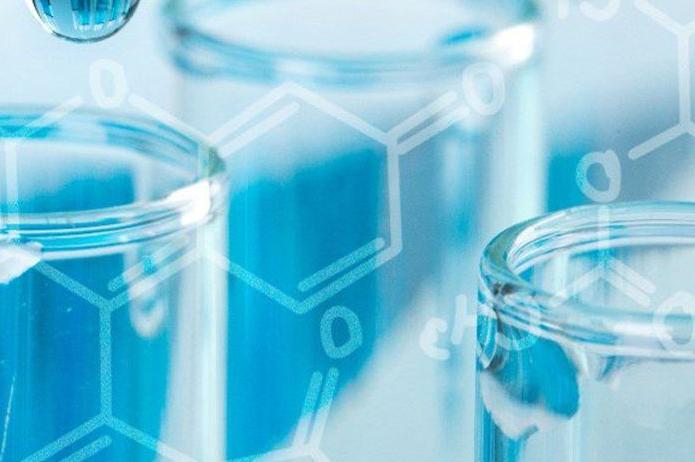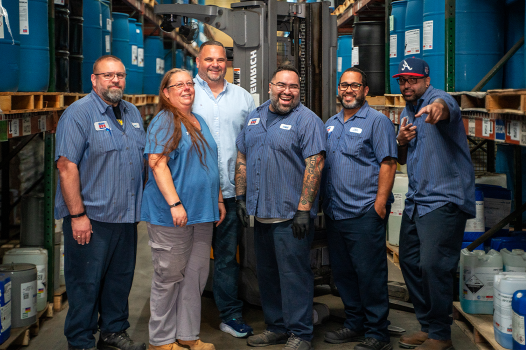Better results. Less chemistry.™

Solvent Alternative
Get The Right Cleaning Solvent Alternative
Sustainability and regulatory concerns are driving companies to look for alternatives to traditional solvents like 1-bromopropane (NPB), Trichloroethylene (TCE), perchloroethylene (PCE/ PERC), and Methylene Chloride for metal parts cleaning and degreasing. Hubbard-Hall has been helping manufacturers tackle these issues with lower-impact solvents or aqueous cleaning chemistries.

Why Switch to an Alternative?
On December 20, 2019, the EPA finalized the designation of 20 chemical substances as “high priority for risk evaluation” under the Toxic Substance Controls Act (TSCA). Included are Methylene chloride, Perchloroethylene (PCE/ PERC), N-Propyl Bromide (NPB) – which the EPA refers to as 1-bromopropane – and Trichlorethylene (TCE).
Today, these chemicals are moving through the process required by TSCA to evaluate any unreasonable risks they may present to human health or the environment. The next step is risk management of these existing chemicals in order of priority. There are several actions EPA could take to address the unreasonable risk, including regulations prohibiting or limiting the manufacture, processing, distribution, commercial use, or disposal of the chemical substance, as applicable.
Current Regulatory Status: December 2024
In December 2024, the EPA issued a final rule banning the use of trichloroethylene (TCE) in all products, effective within one year. Certain uses are exempt under the phaseout plan, including electric vehicle batteries, cleaning for aerospace and defense applications, and medical devices. For industries with exemptions, stricter worker protections will apply, though exposure limits have been amended to align with current monitoring technology capabilities.
In December 2024, EPA issued a final rule regulating PCE. The rule bans many uses of PCE and establishes workplace controls, including a Workplace Chemical Protection Program and prescriptive controls, for those uses not prohibited.
Also known as 1-bromopropane (1-BP), In December 2022, EPA released a final revised risk determination for 1-BP. The final revised risk determination finds that 1-BP, as a whole chemical, presents an unreasonable risk of injury to health under its conditions of use. Risk evaluation for 1-Bromopropane
EPA finalizes regulations under the TSCA to manage the risks associated with methylene chloride. The regulations include prohibitions on the manufacturing, processing, and distribution of methylene chloride for consumer uses. Additionally, most industrial and commercial uses, including paint and coating removers, are prohibited. Strict workplace protections are established through the Workplace Chemical Protection Program to ensure the safety of workers in remaining uses.
18 Months After Finalization (Estimated Later 2025): Workplaces will have approximately 18 months from April 2024 to comply with the Workplace Chemical Protection Program. During this time, they must implement stringent workplace controls and periodically monitor their environments to ensure that workers are not exposed to harmful levels of methylene chloride.
Future: EPA plans to hold webinars to educate stakeholders about the final risk management rule and will develop guides to help small businesses comply with the regulations. Opportunities for public and stakeholder engagement will be provided, including one-on-one meetings with EPA representatives and access to email alerts and public dockets for updates and information.
Current Status of Traditional Halogenated Solvents
| Solvent | EPA Rule Status | Rule Date | OSH (PEL) ppm | ACGIH (TLV) ppm | EPA (ECEL) ppm | Date Rule to be Enacted | Vapor Degreasing Allowed? | Notes from Federal Register |
| MEC | Final | 5/8/2024 | 25 | 50 | 2 | 4/28/2026 | NO; except for NASA & federal use | All uses prohibited except Federal exemptions |
| TCE | Final | 1/16/2025 | 100 | 25 | 0.2 | 1 year | NO; except for NASA & federal use | Several exemptions; 7-50 years |
| PCE | Final | 1/17/2025 | 100 | 25 | 0.14 | 24 months after final rule | Yes, with WCPP* | Prohibition for most consumer and industrial use |
| NPB | Proposed | 8/8/2024 | n/a | 0.1 | 0.05 | n/a | Yes, with WCPP* | Public comments accepted until 9/23/2024 |
Which is the Right Choice for You?

Next-Gen Solvents
Solvent cleaning or vapor degreasing is a process in which an organic solvent is used to dissolve organic contaminants on the component.
More environmentally friendly solvents such as modified alcohols (Dowclene™ and Dualene™) can be used in a vacuum degreaser for cost savings, safety, and efficacy. This type of solvent cleaning will require capital investment, including the purchase of a vacuum degreaser.
Tergo™ is a precision cleaning fluid that is a non-flammable, thermally and hydrolytically stable cleaner that can be dropped into an open-top vapor degreaser with minimal changes or retrofitting.

Aqueous Cleaners
Aqueous cleaning is a water-based process that utilizes chemical additives, surfactants, and rinsing to remove contaminants.
We offer 70+ water-based chemistries for any soil, substrate, or cleaning process. With a transition to aqueous cleaning, you should consider how this will impact your process with the use of heat, multiple tanks, drying time, and increased footprint.
Cleaning celebrity, Mike Valenti, joined our podcast for a 2-part series on this very topic.
Cleaning is a Process
Although chlorinated/fluorinated/brominated solvents have advantages in precision cleaning, there are other methods for removing soils from the surface of metal. Cleaning is considered a process because it is not just about the chemistry – good cleaning depends on several factors:
| • Metal type | • Throughput requirements |
| • Soil type | • Energy demands |
| • Parts geometry | • EHS and regulatory |
| • Available footprint | • Waste handling |
| • Application cleanliness requirements | • Cost |
Ready to take the first step toward solvent replacement?
Schedule a cleaning consult today.








